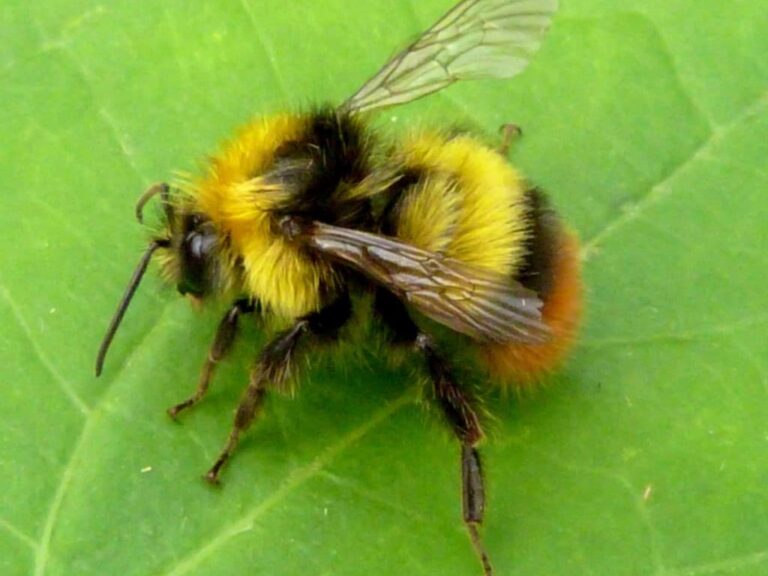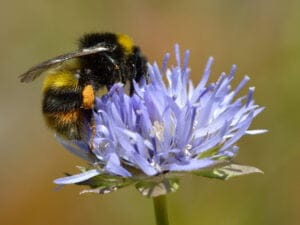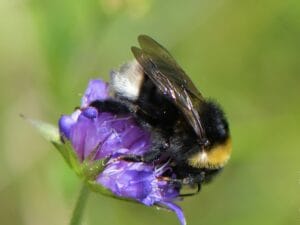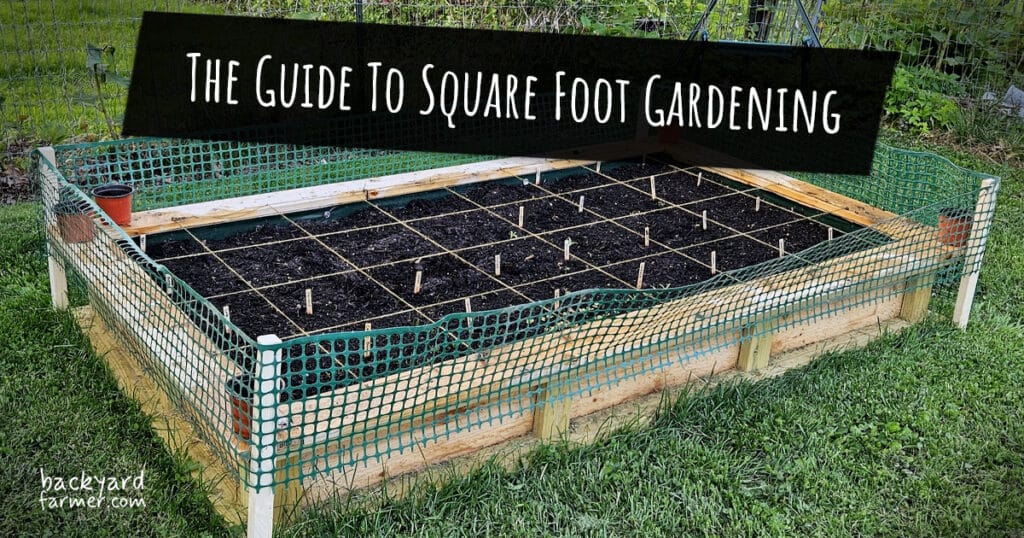Table of contents
Introduction
The Early Bumblebee (Bombus pratorum) is among the first bumblebee species to emerge in spring, making it a crucial pollinator for many plants.
With its small size, fast movements, and striking yellow and black bands, this bee is easy to spot in gardens, hedgerows, and woodlands. It plays a vital role in the ecosystem by supporting biodiversity, fertilizing wildflowers, fruit trees, and crops.
However, habitat loss and climate change pose serious threats to its population. In this guide, you’ll learn how to identify the Early Bumblebee, distinguish it from similar species, and take action to help protect it.
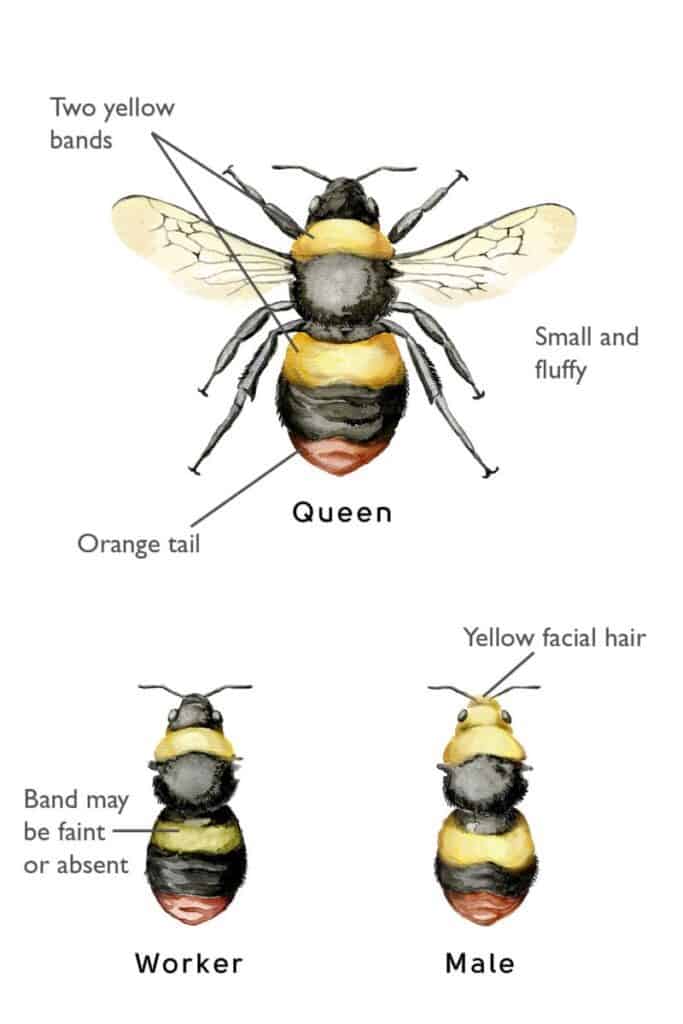
How to Identify the Early Bumblebee
Early Bumblebee identification is straightforward due to its small size, fast movements, and striking coloration. This species features bold yellow and black bands with a reddish-orange tail, making it easy to spot in gardens, hedgerows, and woodlands. As one of the first bees to emerge in spring, it plays a crucial role in pollination.
Physical Characteristics
- Queen – 15-17mm, black body with yellow bands on the thorax and abdomen, and a distinct orange-red tail.
- Worker – Smaller than the queen (10-14mm), similar in color but with a less prominent yellow band on the abdomen.
- Male (Drone) – Slightly larger than workers (11-13mm), featuring longer antennae, more extensive yellow markings, and yellow facial hair.
Identification & Key Facts
| Attribute | Details |
|---|---|
| Common Name | Early Bumblebee |
| Latin Name | Bombus pratorum |
| Size | Queens: 15-17mm, Workers: 10-14mm, Males: 11-13mm |
| Location | Found across the UK and Europe |
| Active Months | March to July |
| Habitat | Gardens, woodlands, hedgerows, and grasslands |
| Nesting Behavior | Prefers abandoned rodent burrows, bird boxes, tree holes, and compost heaps |
| Social Behavior | Forms small colonies with up to 100 bees |
| Flora & Fauna | Feeds on bramble, dandelion, dead-nettle, lavender, sage, white clover, and fruit tree blossoms |
| UK Status | Common |
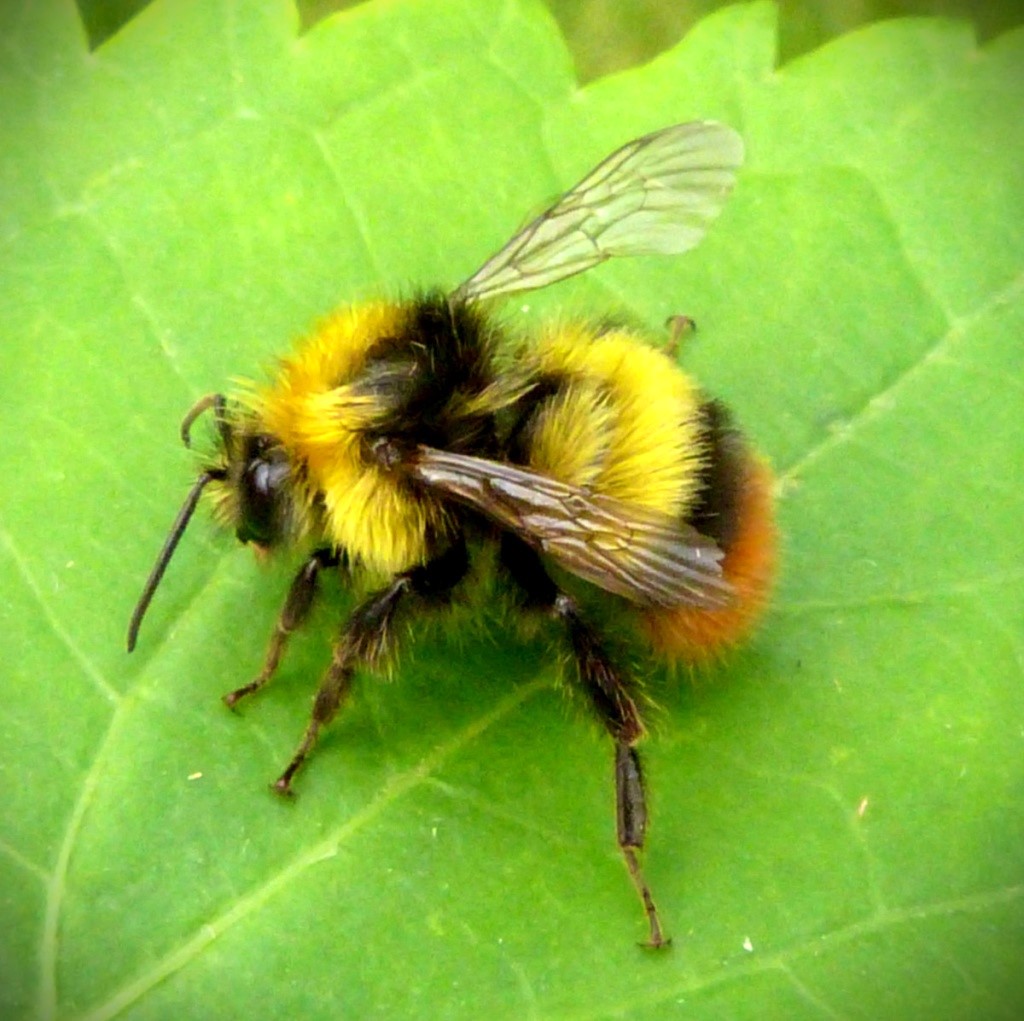
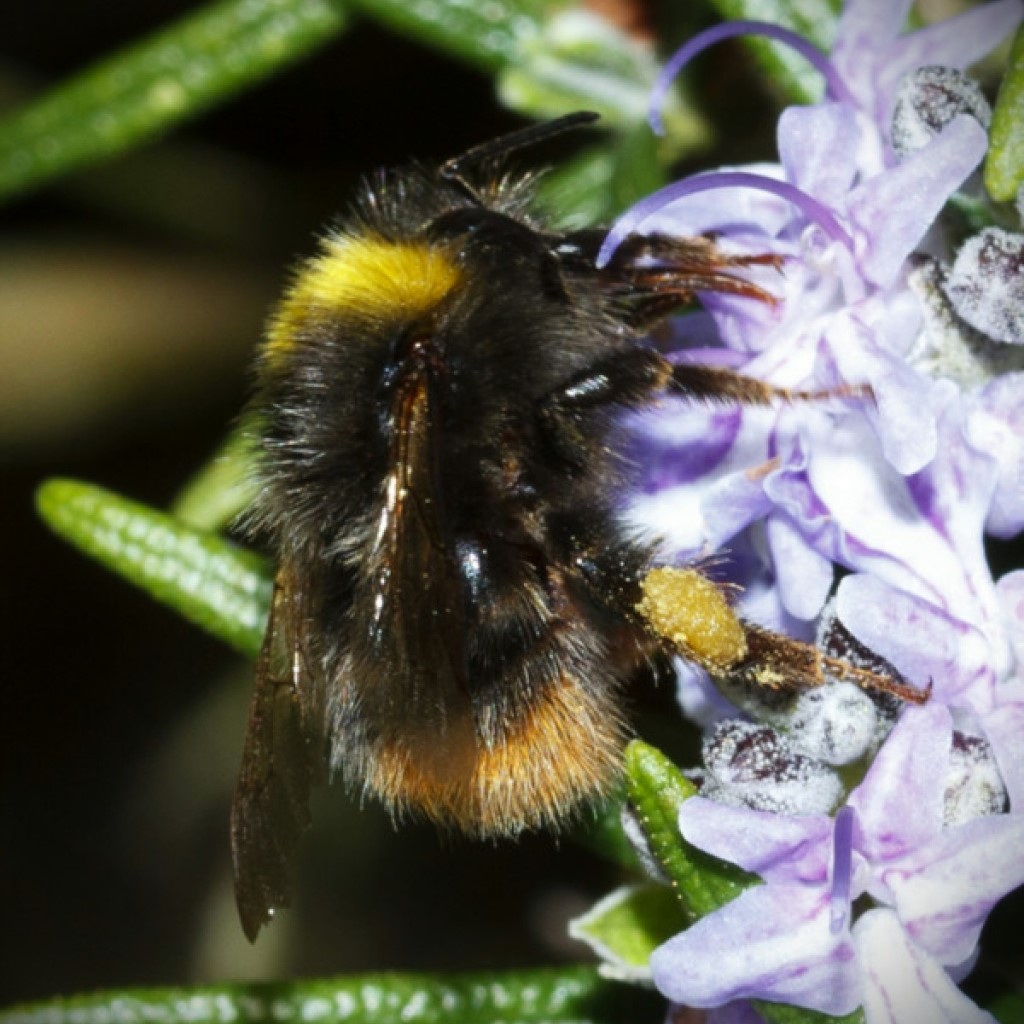
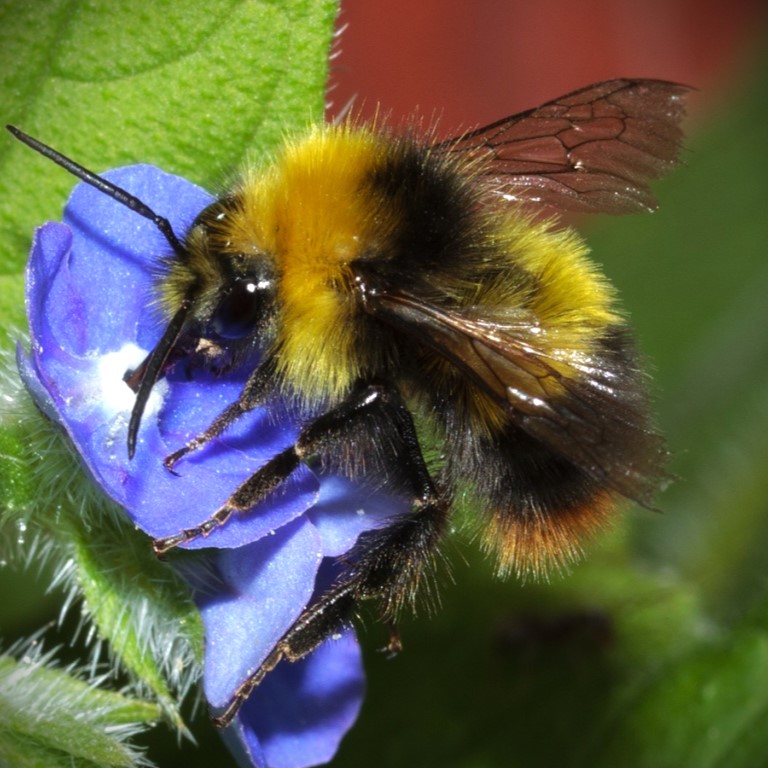
Similar Species
The Early Bumblebee can be mistaken for other small bumblebees, but here’s how to differentiate them:
- Buff-tailed Bumblebee (Bombus terrestris) – Larger, with a buff-colored tail instead of a bright orange-red one.
- Red-tailed Bumblebee (Bombus lapidarius) – Black-bodied with a striking red tail, but lacks yellow bands.
- Tree Bumblebee (Bombus hypnorum) – Recognized by its orange-brown thorax, black abdomen, and white tail.
Want to improve your bee identification skills? Check out our comprehensive Bee Identification Guide for more tips.
Why the Early Bumblebee Matters
The Early Bumblebee is a vital pollinator in the UK. It supports biodiversity by fertilizing wildflowers, fruit trees, and garden plants. Since it emerges in early spring, it plays a key role in pollinating apple blossoms, blackberries, raspberries, and other seasonal plants. However, habitat destruction and climate change pose a serious threat to its population.
How You Can Help
You can support the Early Bumblebee and other pollinators by taking these simple steps:
Plant Bee-Friendly Flowers
- Grow lavender, sage, bramble, dandelions, bluebells, white clover, and comfrey to provide essential nectar.
Avoid Harmful Pesticides
- Say no to neonicotinoids and other harmful insecticides. Instead, choose organic pest control methods.
Provide Nesting Spaces
- Keep wild areas in your garden, leave undisturbed soil, and allow old mouse burrows to remain. Installing bee hotels can also encourage nesting.
By making your garden pollinator-friendly, you’ll help the Early Bumblebee and other essential species thrive. Check out these WWF bee-friendly gardening tips to start making a difference today!
